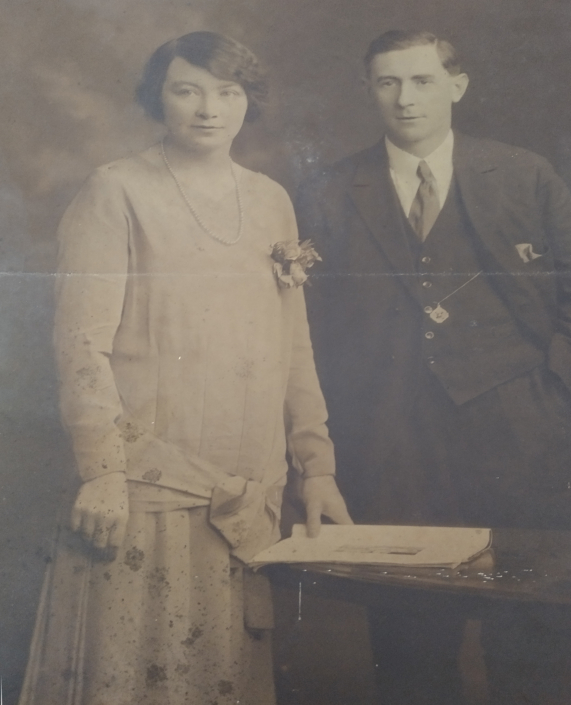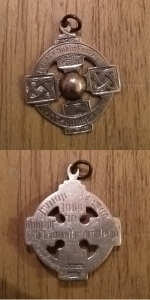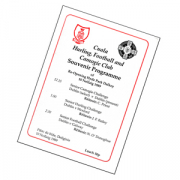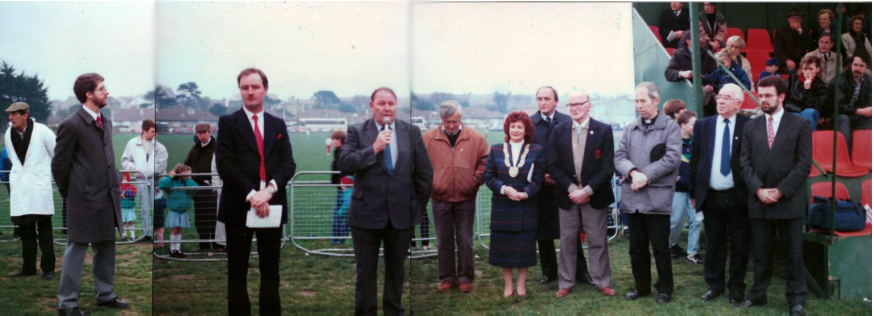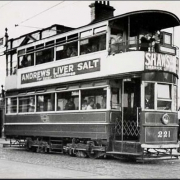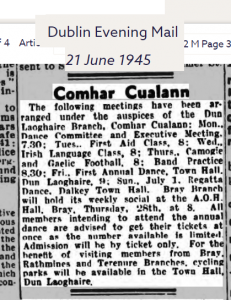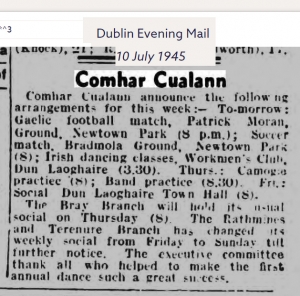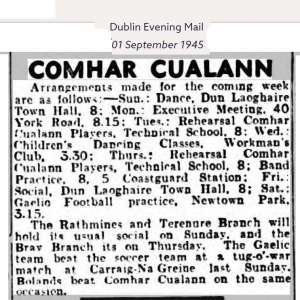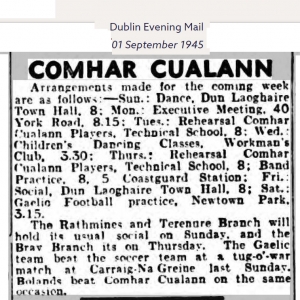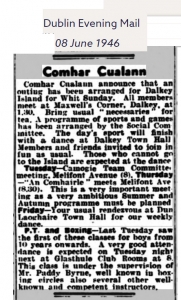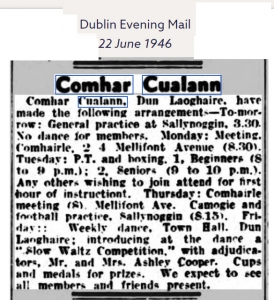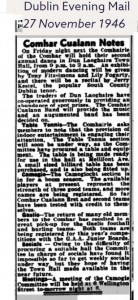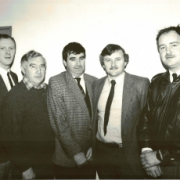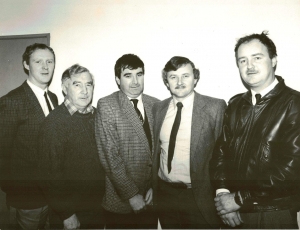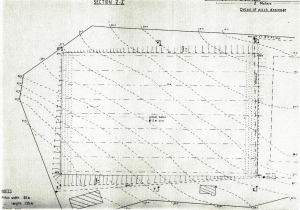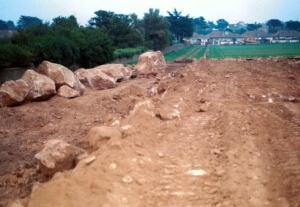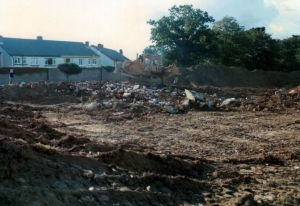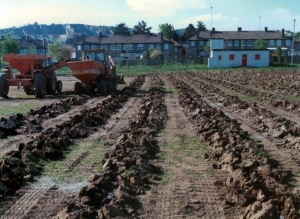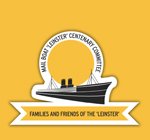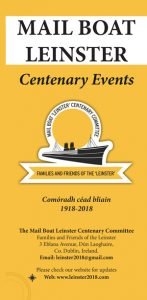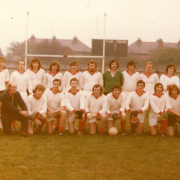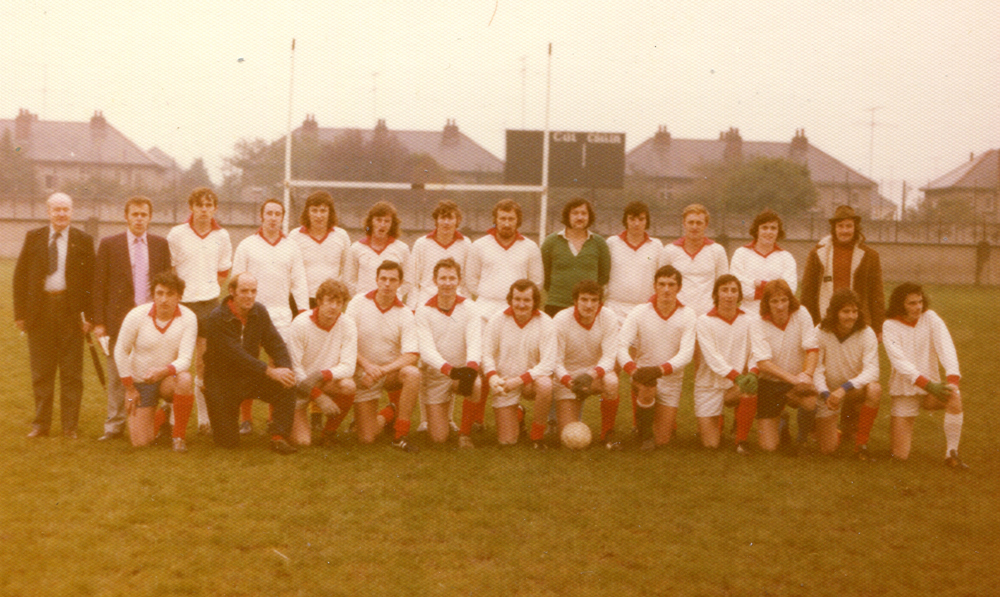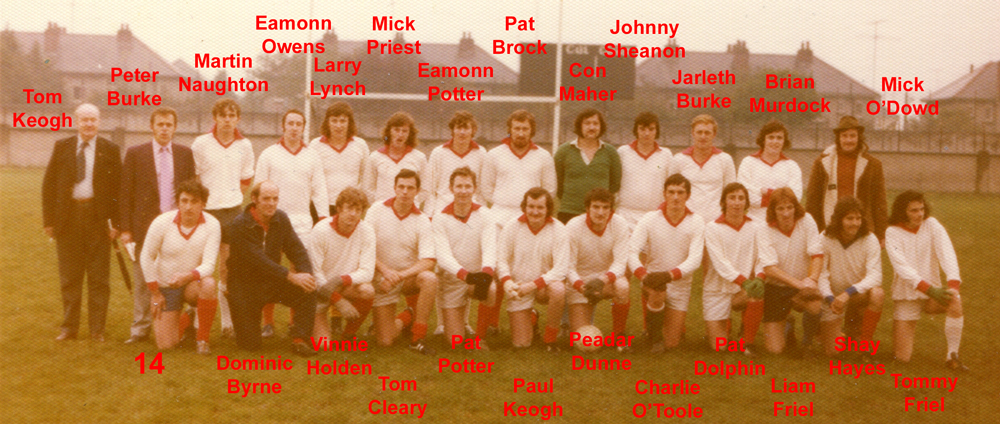Cuala Hurlers 1920 – And Our Very First Match Report
 We first reported on the Cuala Hurlers of the 1920s back in 2011. Now Cartlann Digiteach Cuala has a good excuse to re-post because not only have we obtained a better image of the team but we’ve also built up a better picture of their activities including the earliest-ever Match Report of a Cuala team.
We first reported on the Cuala Hurlers of the 1920s back in 2011. Now Cartlann Digiteach Cuala has a good excuse to re-post because not only have we obtained a better image of the team but we’ve also built up a better picture of their activities including the earliest-ever Match Report of a Cuala team.
A word of caution, Cartlann Digiteach Cuala believes the people identified here are accurately named. however some of the names may be mis-attributed to their corresponding image. In any event this team is, without doubt, the earliest side that can show a direct link to members of the current club.
Back Row (L-R)
01. Eamon Quirke 02. Unknown 03. William Byrne (Snr.) 04. Paddy Darcy 05. Paddy Murphy 06. Paddy Dennehy 07. Joe Hennessy 08. Jack Thomas 09. Tom Mullen 10. Unknown 11. Charlie Somers
Middle row (L-R)
12. Unknown (kneeling) 13. John Moloney 14. Paddy Thomas 15. Tom Byrne 16. Liam Byrne 17. Eamon McNoibin 18. Seamus Byrne 19. Mylie O’Neill
Front Row (L-R)
20. Michael Byrne 21. John Kelly 22. Stephen Taylor (boy) 23. Jack Ledwidge 24. Unknown
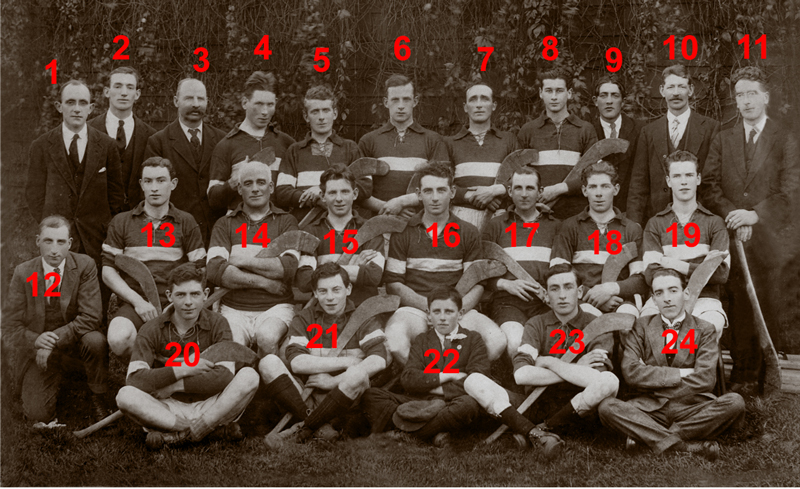
#03 William Byrne (Snr) was the 52-year-old father of 7 boys, 3 of whom are in this picture – #16 Liam (aged 23), #18 Seamus (aged 21) and #20 Michael (aged 17). (Ages assume that picture is dated 1920). Liam was the grandfather of Damien Byrne (Cuala and Dublin Goalkeeper) and John Paul Byrne (Cuala, Dublin & Leinster Champion).
Several of the men in this picture were active in the War of Independence. In April 1921, Crown Forces conducted extensive raids in Dalkey & Killiney; among those arrested and later released, were Edward Quirke, Paddy Darcy, Jack Thomas and Tom & Michael Byrne.
If you know the unknowns, we’d be delighted to hear from you.
The Cuala Hurlers were active from at least 1920 when they played Junior Hurling under the auspices of the Dublin Board and lined out against clubs like Raperess, College of Science and St Kevins. In 1921, we have our first match report from when the Dalkey men travelled to Bray to play a friendly against St Cronins.
1922 saw them battling on and, in January at Croke Park, they played in the Junior League Final against Lucan Sarsfields. It wasn’t to be their day. Later that year, their league agenda saw fixtures against Conradh na Gaelige, Fontenoys, Fintan Lawlers and Confederates. By 1923, they had become acquainted with St Dympnas, Kickhams, Young Emmetts and Rathmines.
Incidentally, all home games seems to have been fixed in the Phoenix Park but local intelligence is that training took place in a field at the “Firm” – near Hillside (thanks Harry Roberts). The firm was so-called, not after any particular business enterprise but because, it was the site of a large (ahem) “recycling facility” that had to be trampled down (‘firmed’) for stability.
1924 saw another busy year with fixtures against Civil Service, Civic Guards, Colmcilles and Shamrocks. Highlights of the season were a celebrity appointment in Enniskerry (more later) and the inclusion of two players – Byrne (which one?) and Ledwidge in a trial for the Dublin County Juniors.
The team carried on through 1925 and 1926 though they were finding it hard to keep in touch with dominant sides like Lusk & Civil Service. By October, they had only tasted success in 3 out of 21 fixtures.
After that, Cartlann Digiteach Cuala lost sight of this team and it was assumed that the team might have disbanded. But lo and behold, the hurling story was not over – we found them on the fixture list in 1932. Alas their game against Bray Emmetts was a walk-over. Though isn’t it fitting that both clubs are still thriving 90 years on.
At the time, Cuala supporters might have found the going tough but surely we can now look back with pride at this wonderful team that set us on our long journey to greater things.

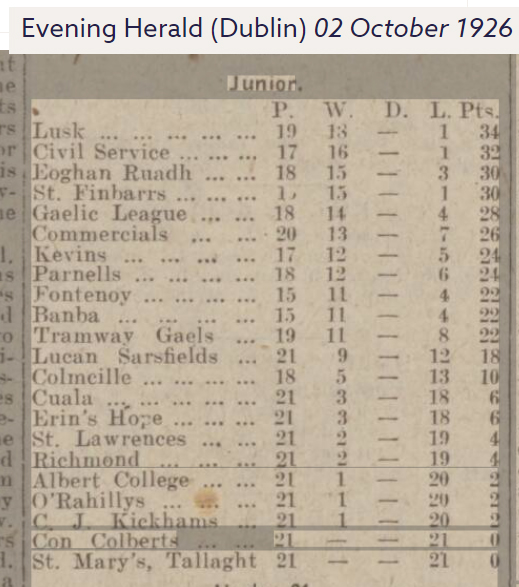
 Cartlann Digiteach Cuala (Cuala Digital Archive) maintains an on-line archive of images and stories relating to Cuala, its ‘ancestral’ clubs and other Gaelic clubs that once operated in its area. If you have any information or material to share with us, please contact –
Cartlann Digiteach Cuala (Cuala Digital Archive) maintains an on-line archive of images and stories relating to Cuala, its ‘ancestral’ clubs and other Gaelic clubs that once operated in its area. If you have any information or material to share with us, please contact –
Michael Goodwin, +353 (0) 87 2266140, history@cualagaa.ie

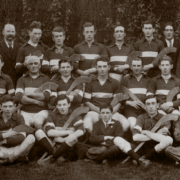

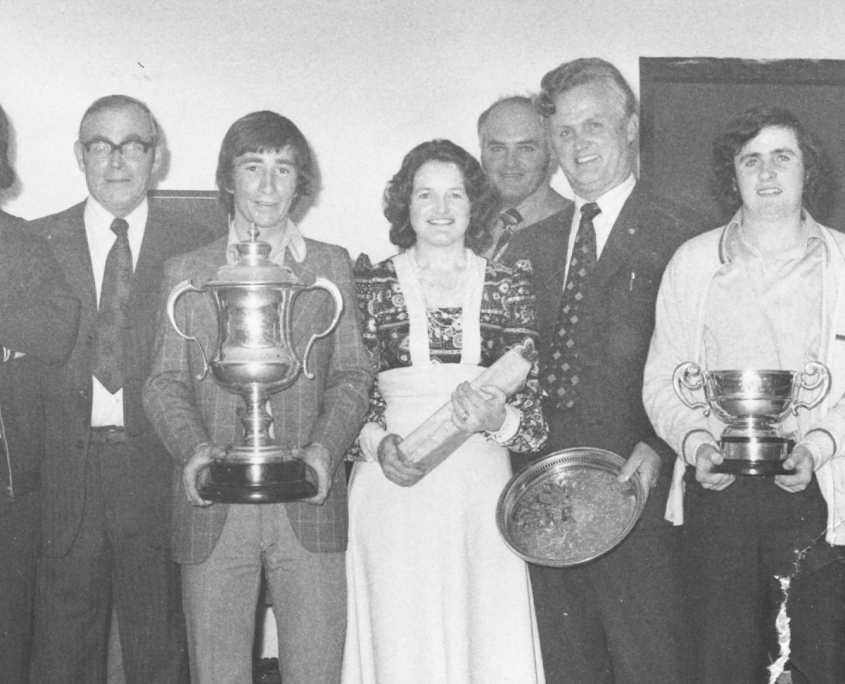
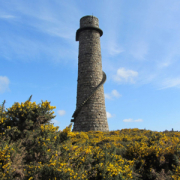


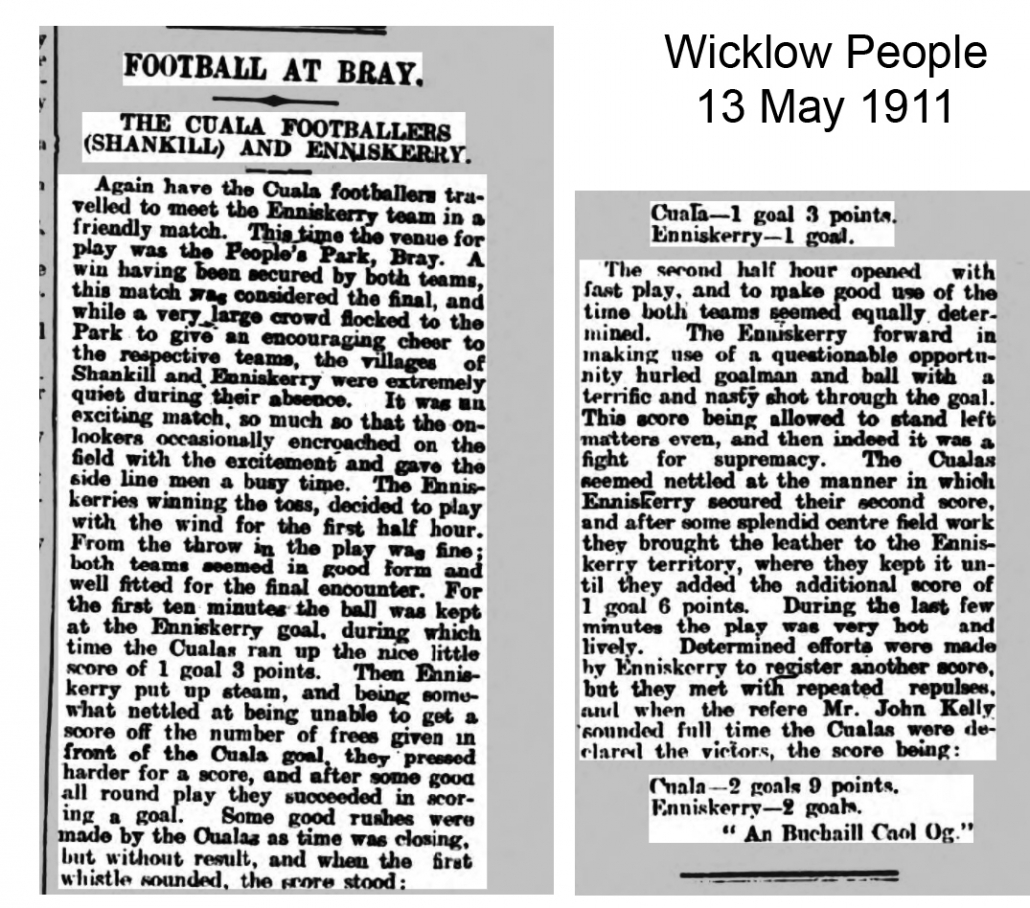



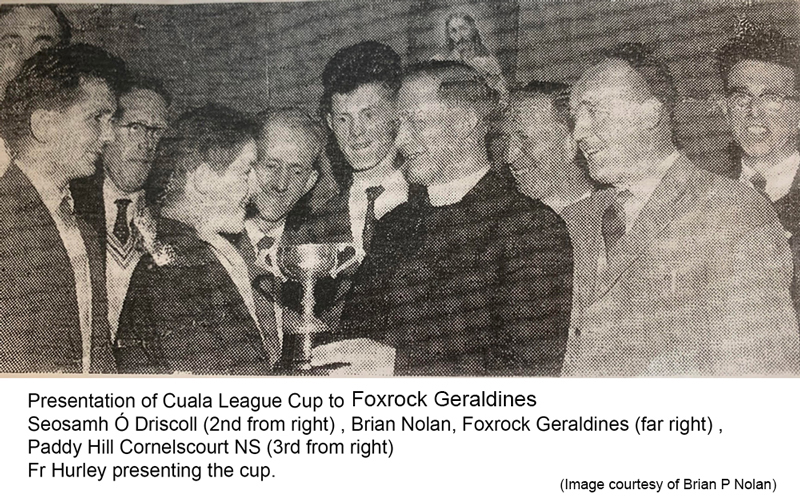


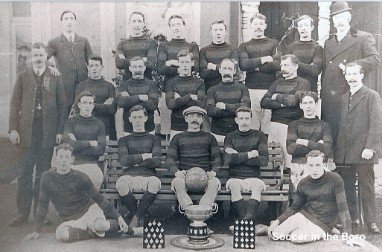
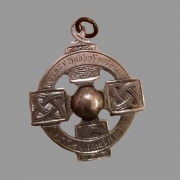 Our attention was drawn to O’Connells by Ray Logan who kindly shared an image of a Dublin medal that belonged to one of the team – Lawrence “Lanzy” O’Brien. It was awarded to the winners of the Dublin Junior League in 1910-11. At that time, O’Brien was most likely the Longford-born assistant in Doran’s Vintners in 106 Upper Georges street. Today, the spot is occupied by AIB though older readers, familiar with the pre-shopping centre town, may remember it as “The Glenbournie”. Lanzy may well have excelled in his duties at his Kingstown place of work but we now know he was also a talented footballer with a medal to prove it. This can only have been good for his relationship with the boss Michael Doran who, when he wasn’t attending to the refreshment of the local populace, was a prominent officer of Daniel O’Connell’s Gaelic Football Club. The Club Secretary, Malachy Doyle worked next door in Liptons as a grocers assistant, living over the shop.
Our attention was drawn to O’Connells by Ray Logan who kindly shared an image of a Dublin medal that belonged to one of the team – Lawrence “Lanzy” O’Brien. It was awarded to the winners of the Dublin Junior League in 1910-11. At that time, O’Brien was most likely the Longford-born assistant in Doran’s Vintners in 106 Upper Georges street. Today, the spot is occupied by AIB though older readers, familiar with the pre-shopping centre town, may remember it as “The Glenbournie”. Lanzy may well have excelled in his duties at his Kingstown place of work but we now know he was also a talented footballer with a medal to prove it. This can only have been good for his relationship with the boss Michael Doran who, when he wasn’t attending to the refreshment of the local populace, was a prominent officer of Daniel O’Connell’s Gaelic Football Club. The Club Secretary, Malachy Doyle worked next door in Liptons as a grocers assistant, living over the shop.